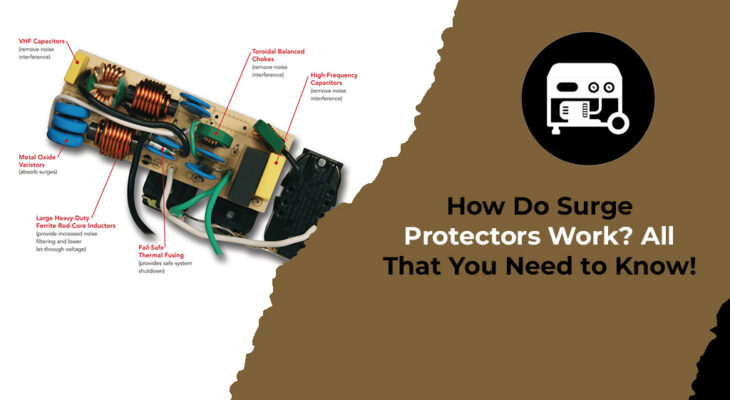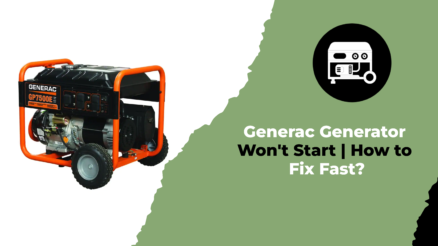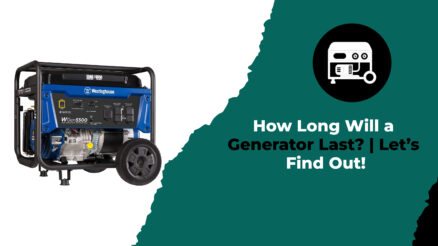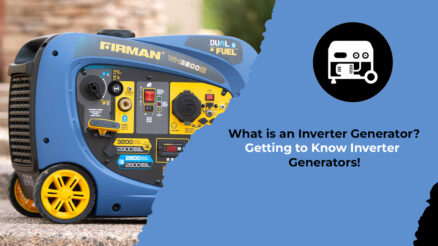In a world where our gadgets light up our lives, there’s a quiet defender working behind the scenes to keep them safe: the surge protector. Imagine it as a superhero shield for your electronics.
Wondering how does a surge protection device work? Ever heard of sudden power hiccups or lightning dances that can zap our devices? Well, that’s where surge protectors come in for the rescue, like trusty sidekicks. They’re like energy traffic controllers, watching the electric waves. When a surge, like a power tsunami, tries to rush in and cause chaos, the protector takes charge.
Picture this to understand the concept: the surge protector spots the trouble and quickly reroutes the extra power down a safe path – just like diverting traffic away from a jam. This clever move safeguards your gadgets from getting fried or frazzled.
In this article, we’ll uncover the mystery behind these tech defenders. We’ll talk about electrical surge suppression, surge protectors vs. power strips, how surge protectors stand between your devices and electric bullies, keeping everything running smoothly in your electrifying world and a lot more. Let’s begin!
What is Basically a Surge Protector?
A surge protector is like a guardian for your electronic devices. It’s a special device that keeps them safe from sudden blasts of extra electricity.
It looks like a power strip, just like the one you plug things into, but with extra powers. It has a bunch of slots where you can plug in your gadgets, like your computer, TV, or game console. If there’s a sudden surge of electricity, like from lightning or a power hiccup, the protector quickly stops the extra electricity from going into your gadgets and sends it away. This keeps everything safe!

While discussing the significance of surge protectors, it would be interesting to draw some attention towards the blackouts and brownouts of power. Take a look at one of our articles comparing the two: Brownout vs. blackout.
How Does a Surge Protector Work?
A surge protector device (SPD) is a guardian against the harm that sudden big power jumps can bring. It operates by taking the electricity from an outlet and transferring it to your devices plugged into the protector. Inside, there’s a part called a metal oxide varistor, or MOV. This component works like a clever valve. If it notices high voltage, it opens up to let the extra electricity flow away. And if the voltage is too low, it tightens up to keep the electricity steady.
MOV has three pieces: metal oxide and two semiconductors. The metal oxide lies in between the two semiconductors. These semiconductors can change their resistance, making the electricity either slow down or move quicker. This helps them deal with too much or too little voltage.
So, when your gadgets are hanging out with a surge protector, they’re in good hands. It’s like having a watchful friend that keeps the electric party safe and fun.
Here’s an article that I found helpful for understanding the SPD operation. You might also want to give it a read for a better understanding. Go check out: Operation of Surge Protection Devices!
How to Choose the Right Surge Protector?
Selecting the right surge protector involves a few key factors. Begin by considering the devices you want to protect. While a simple lamp might not require defence, sensitive electronics like a PC, demand stronger protection due to their intricate components. To gauge a surge protector’s effectiveness, it’s essential to know its ratings.
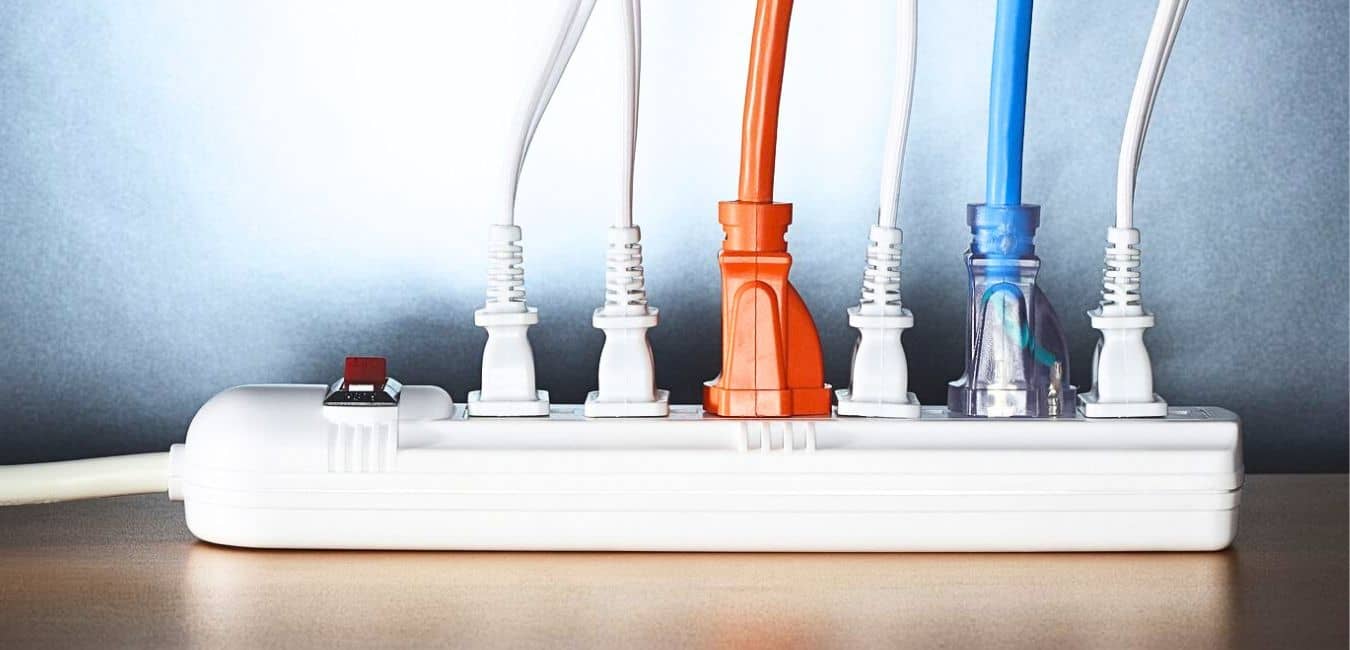
Joules Rating
This metric indicates the surge capacity the protector can withstand before it fails. A higher joules rating indicates better protection. Seek a rating of at least 200 joules for delicate devices and ideally over 600 joules if you prefer optimal security.
Clamping Voltage
This voltage level marks when the MOVs (Metal Oxide Varistors) divert excessive power to the ground. Lower values are preferable here. Anything exceeding 400V is considered high voltage. It is recommended to look for protectors with around 330V or less for better defence.
Response Time
This measures the MOVs’ speed in redirecting surplus power. It is common for surge protectors to exhibit a slight delay, often measured in nanoseconds.
Protectors frequently display “<1 Nanosecond” as their response time. If the response time is greater than 1 nanosecond, it means there’s a slight delay before the surge protector kicks in. While this delay might not be noticeable to us, it could potentially allow a small amount of extra electricity to reach your devices before the surge protector fully engages. This is why response times exceeding 1 nanosecond are seen as prolonged – they indicate a slightly slower reaction to surges.
Joule Ratings for Surge Protectors
You might have observed that surge protectors come with specific protection values, measured in joules. A surge protector’s joule rating shows how much energy it can handle before reaching its limits. A higher joule rating means stronger protection.

Performance Features of Surge Protective Devices
Understanding surge protection components is useful, but the real driving force behind Surge Protective Devices is how well they perform and what features they offer.
When you’re picking an SPD, here are some things to consider:
- Maximum Continuous Operating Voltage (MCOV) – This is the highest voltage an SPD can handle while still working properly. It’s usually best if it’s at least 25% higher than your regular voltage. For example, if your normal voltage is 120, an MCOV of 170 is good.
- Voltage Protection Rating (VPR) or Voltage Protection Level (Up) – These are like scores that show how much voltage gets through the SPD when it’s hit with a big electrical surge. Lower scores are better here. UL uses VPR, and IEC uses Voltage Protection Level.
- Nominal Discharge Current (In) Rating – This is about how much electrical current the SPD can handle during surges/energy attacks and still keep working. It’s measured in a special way with a certain kind of current shape.
- Indication Status – There’s a simple indicator, like a light or an alarm, that shows if the SPD is working or not.
- Surge Current Capacity or Maximum Surge Rating – Some folks think this is important, but it’s a bit tricky. Manufacturers talk about how much surge the SPD can take over its life or just once. But there isn’t a clear standard for this, so it’s not always reliable to compare.
Power Strip VS Surge Protectors
A power strip is an extension cord with multiple outlets, allowing you to plug several devices into a single wall socket. It provides more outlets for convenience but doesn’t offer any protection against electrical surges. It may also have a circuit breaker.
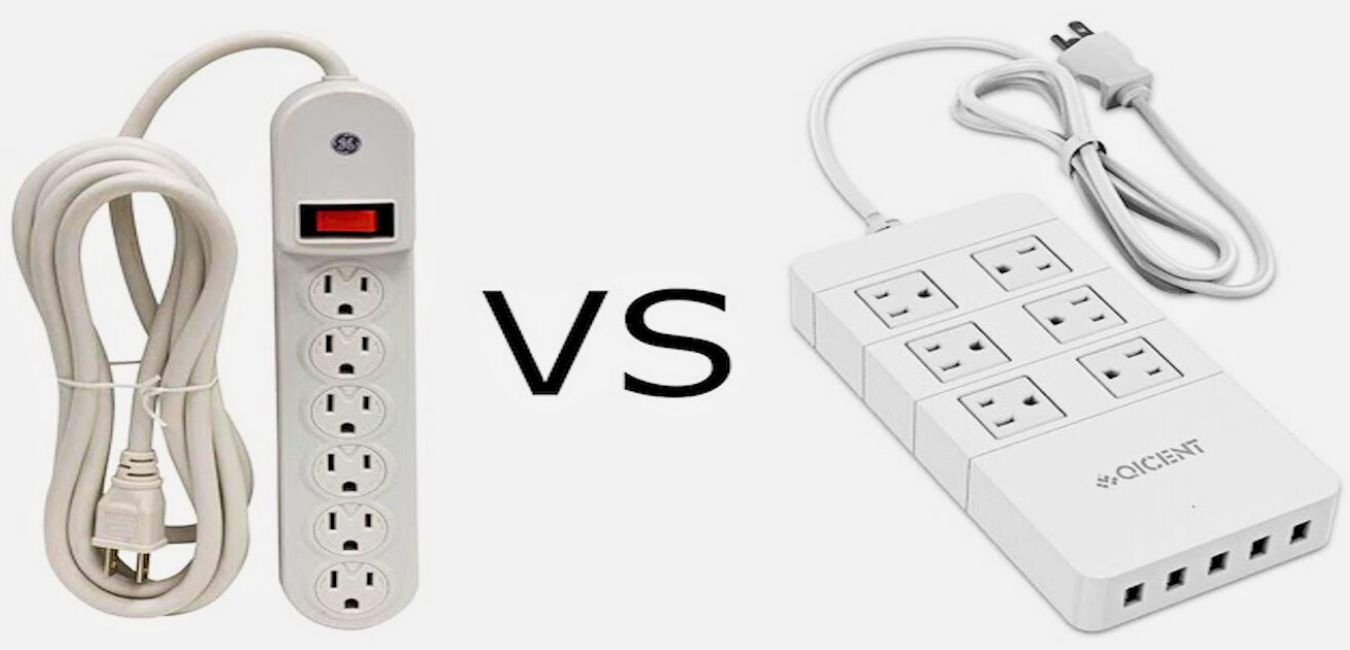
On the other hand, a surge protector also provides multiple outlets like a power strip, but its main purpose is to safeguard your devices from sudden spikes in voltage, known as power surges. These surges can occur due to lightning strikes, faulty wiring, or power fluctuations.
A Multilayered Approach to Protection is Essential
For comprehensive safeguarding, all three types of surge protection devices—especially Type 2 and Type 3—are necessary.
- Type 1: Whole House Protection
Placed between the street’s power lines and your meter, this shield offers initial defence.
- Type 2: Whole House Protection
Positioned between your meter and breaker box, this layer adds another level of protection.
- Type 3: Point-of-Use
These compact guards sit at wall outlets where your appliances plug in, ensuring localized protection.
How Do Surge Protectors Work – FAQs
Conclusion
In conclusion, surge protectors play a vital role in maintaining the longevity and reliability of our electronic devices. However, it’s important to understand that while surge protectors provide essential defence against many common electrical anomalies, they might not offer complete immunity against extremely powerful surges like lightning strikes. Regular maintenance and replacement when needed are recommended to ensure their continued effectiveness.


